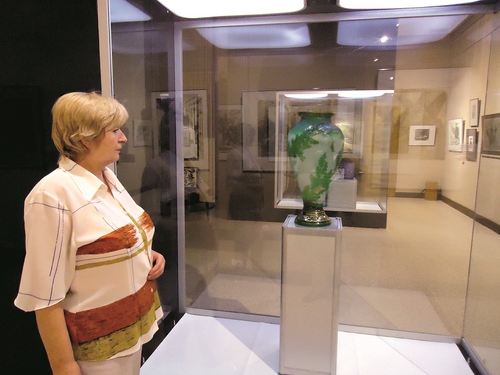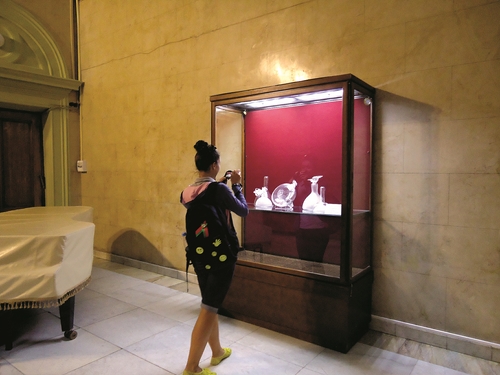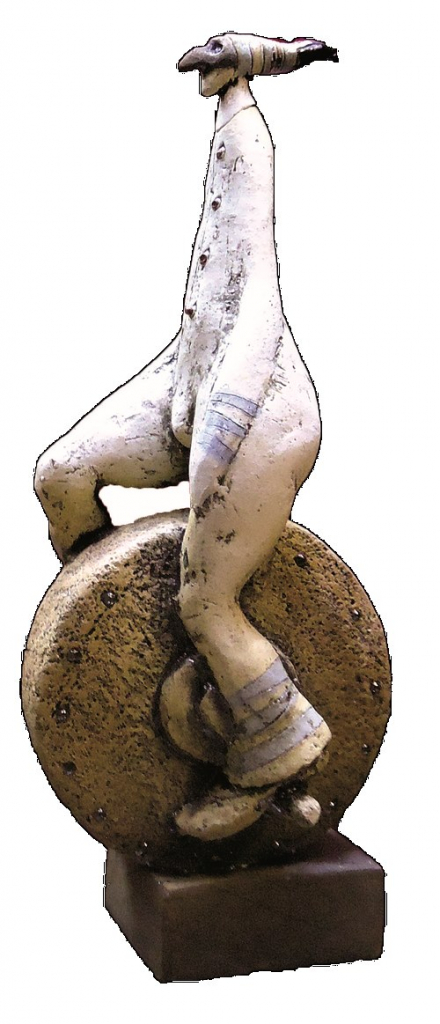The plant has been operating for more than a hundred years, its museum holding a great number of items made since the early 20th century. The enterprise launched in the late 19th century, glass factories being known in the town of Borisov, in the Minsk Province, since the 1880s. A merchant from Minsk, Berka Kabanov, opened a glass production facility in 1898, which passed to engineer Krayevsky in the early 20th century, and was named ‘Borisov’ Crystal Factory.

Diversity of exhibition of crystal goods from Borisov
The factory produced high-quality lamp glass famous for its clarity, made using the pressing method, and decorated by etching, brilliant-cut, gold and enamel painting, and grooving. Products sold across the Russian Empire and far beyond. In 1910, Borisov crystal was awarded a medal at a glassware exhibition in Paris.

Following the revolution of October 1917, the factory was nationalised and renamed as Borisov Glass Plant. It endured the calamities of the civil war and began manufacturing again in 1921. In 1922, the company was named after Tadeush Dombal, an academician of the Belarusian Academy of Sciences. The plant was reconstructed and, by 1940, produced 320 varieties of glassware, exported to Afghanistan, Great Britain, Germany, Egypt, Turkey and France. By 1930, its pressed glass was recognised as the best in the USSR. A school of apprentice training was set up there, for furnacemen, glass-blowers, polishers and glass cutters. In 1938, Borisov masters made large vases and dome lamps for the All-Union Agricultural Exhibition in Moscow.

During the Great Patriotic War, the Borisov plant was devastated, but resumed operation in 1944, specialising in artistic glass production. Along with pressed dishware, its masters made decorative vases from glass, clear and coloured, and brilliant-cut pieces, as well as blown items from overlaid glass. New ornamentations and design techniques were developed and, in 1957, an experimental art lab opened, employing students Antonina Abramova and Vladimir Prokofiev, from Leningrad’s Highest Art and Industry Technical School (named after V. I. Mukhina). Later, graduates from the Belarusian Theatre and Art Institute, Piotr and Tatiana Artemovs and Raisa Klimkovich joined the artistic team. From the second half of the 20th century, the artists became core figures in the manufacturing process. New artistic ideas were implemented across all items, whatever the size of run, from limited-edition pieces to mass production.

In the second half of the 1960s, the Borisov plant underwent a major overhaul. Since the 1970s, it has been manufacturing glass painted with rare-earth elements. Ideally shaped and proportioned, it’s appealing in its fineness and simplicity and in its more creative expressions, using geometric ornamentation and brilliant-cuts, depicting various scenes.
In 1970, the plant was awarded the title of a ‘high production culture enterprise’. Glassware and crystal by Borisov artists and masters would be regularly showcased at the USSR VDNKh (Exhibition of Achievements of National Economy), and at international fairs in Brussels, Budapest, London, Canada, Bulgaria and Germany. It was awarded prestigious prizes in Paris and Italy.

In 1978, on the occasion of its 80th anniversary, the plant was renamed as Borisov Crystal Plant, in honour of F. E. Dzerzhinsky. On December, 1st 1999, the plant became a republican unitary enterprise, with artistic crystalware as its major product. It remains a leading producer of crystal dishware in the CIS, having kept its manufacturing profile and professionalism.

The collection at the plant’s museum is of significant historical and artistic value, vividly reflecting the plant’s experimental period in the 1950s-1960s, through until the early 21st century. It includes pieces bearing unique patterns, created by Moscow artists Galina Antonova, Yekaterina Batanova, Olga Kobylinskaya, Nadezhda Matushevskaya, and Nina Rostovtseva, who helped revive Borisov Crystal Plant after the Great Patriotic War. Also on show at the current exhibition are pieces designed and made by Galina Isaevich, Antonina Abramova, Vladimir Prokofiev, Piotr Artemov, Tatiana Artemova, Raisa Klimkovich and Yelena Atrashkevich, created between the second half of the 20th century and early 21st century. These represent a unique phenomenon in European artistic glass making.
By Vladimir Mikhailov











